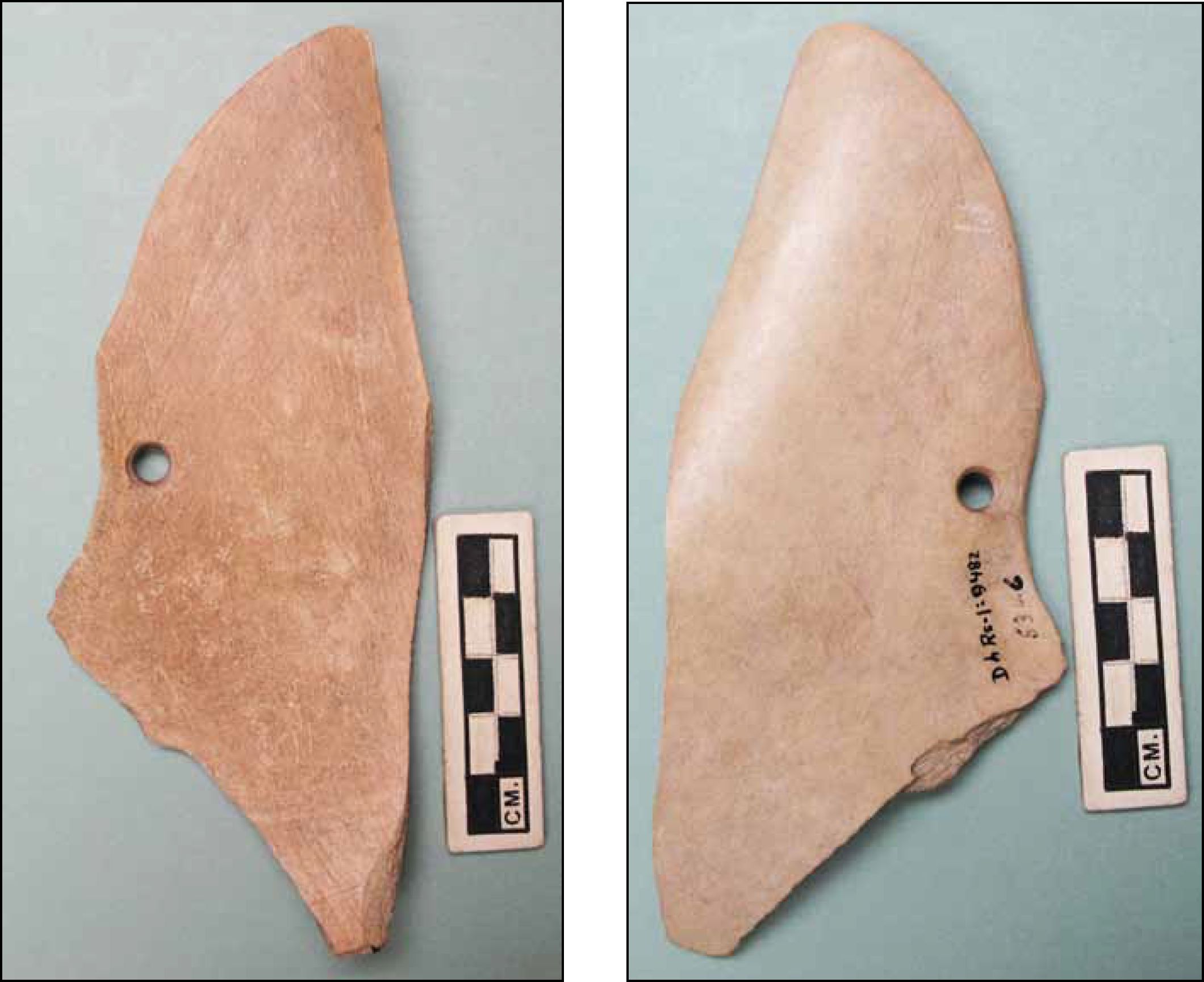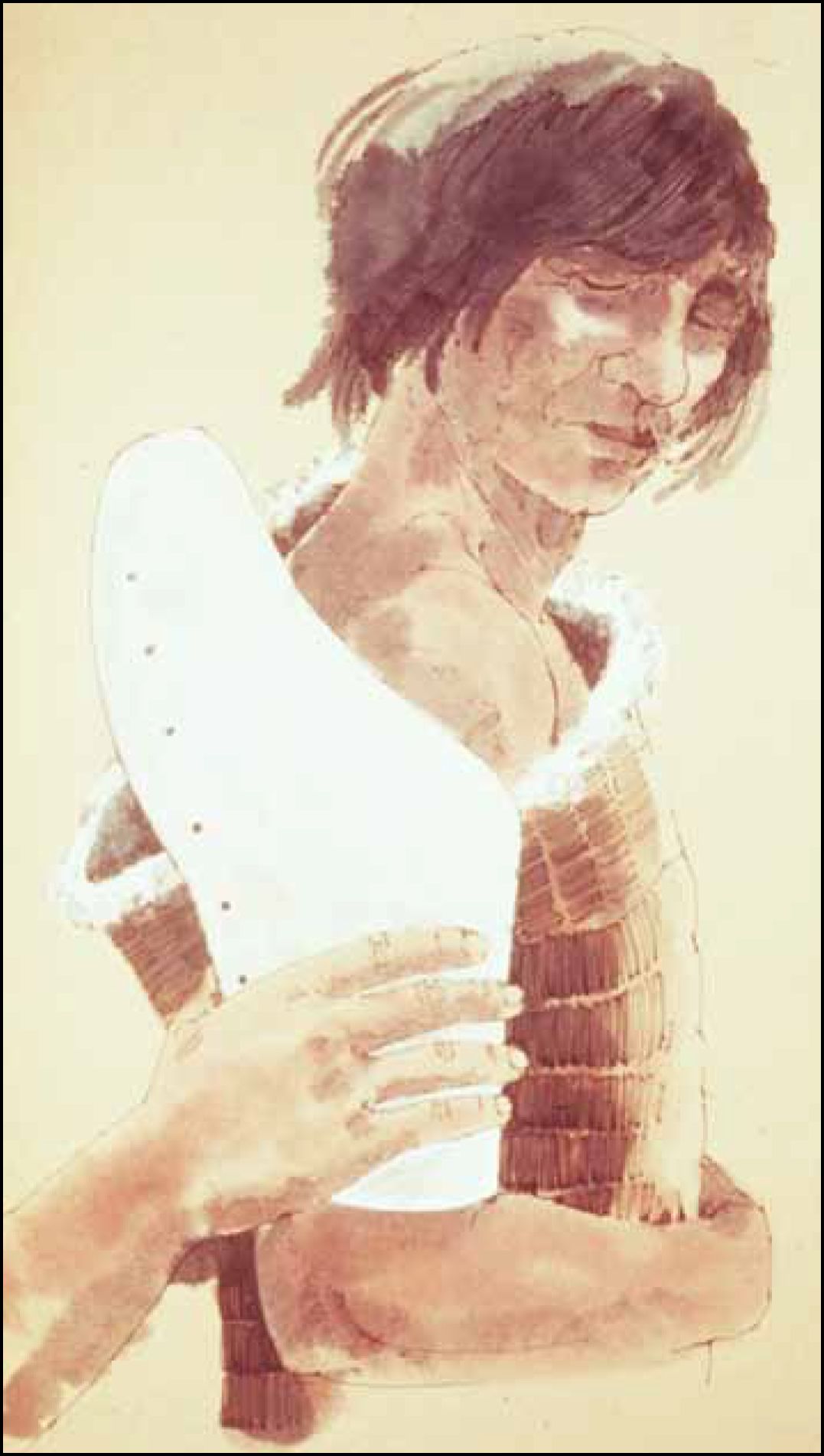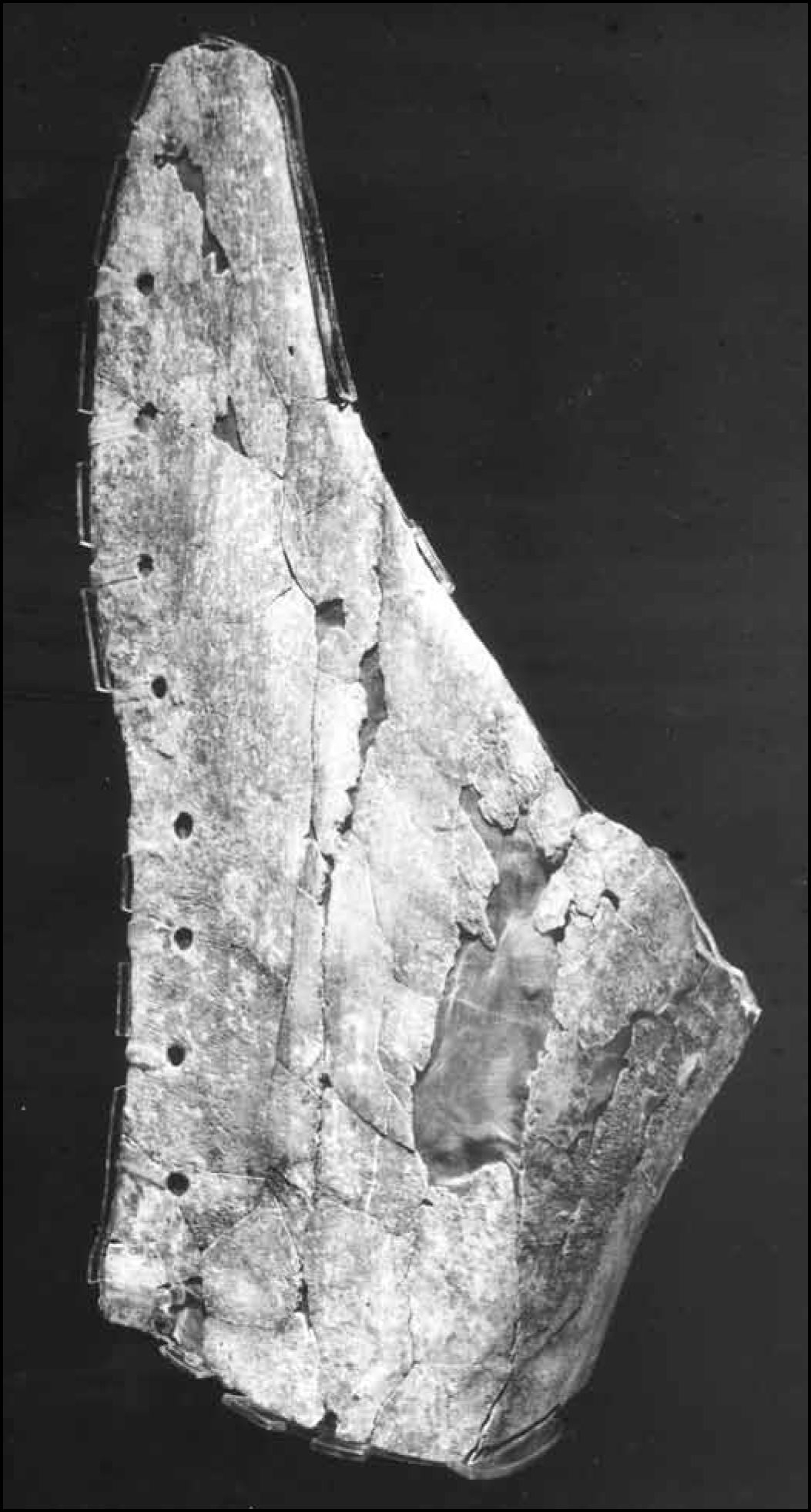Originally published in The Midden, 44(2), 22-23.
2012.
Grant Keddie

A unique artifact from the collection of the Royal British Columbia Museum (RBCM), DhRs-1:9482, is made from a ground and shaped piece of whale scapula (Figures 1 and 2 above). It was part of a collection originally donated in 1950 to the Saskatchewan Museum of Natural History by P.T.O. Menzies. Menzies had collected these artifacts from the Eburne or Marpole site in 1931.

I suggest that this is another example of the unique pair of whale bone armlets (DgRw-4:3012) found at the False Narrows site on Gabriola Island. These armlets were extremely fragmented when uncovered but were meticulously reconstructed by the conservation unit at the RBCM (Figure 4). Before reburial, they were on display in the old archaeology exhibit at the museum where they were described as whale bone armour. The drawing provided in Figure 3 suggests how they were worn.

David Burley (1988) assigned the armlets to the False Narrows I period dated around 100 bc to 150 ad. The dating was based on “diagnostic similarities” of the assemblage with the Marpole type site. At the very least, it is believed to predate a component II date of 240±90 AD.
The margins of artifact DgRw-4:3012 are perforated at 20-30mm intervals. Burley suggested that these perforations “may have been associated with either lashing or a means by which other decoration was attached,” and noted that the armlets were “believed to be part of a dancing costume.” That artifact was found in an adolescent male burial with an elaborate group of artifacts that included a lignite coal beetle pendant, two incised elk antler tines, 2506 shell beads, three dentalia and three teredo worm caste beads.
The outer edges of the Marpole site artifact is only complete above the 6mm diameter hole. Although the bone fragment is just 148mm by 60mm, it closely resembles the upper narrow portions of the left armlet from False Narrows. It also has a similar inwardly curved edge. The latter may have been a result of scapula sections being steamed and bent—similar to the process for shaping mountain sheep horn.
We cannot rule out that these armlets were part of a ceremonial costume. The Marpole piece, however, has a fairly tough 3mm thickness. It could have served the purpose of body armour if, for example, it was placed between two layers of elk hide—the preferred upper body armour in the early 19th century.
References
Burley, David, V. 1988. Senewelets. Culture History of the Nanaimo Coast Salish and The False narrows Midden. Royal British Columbia Museum. Memoir No. 2.